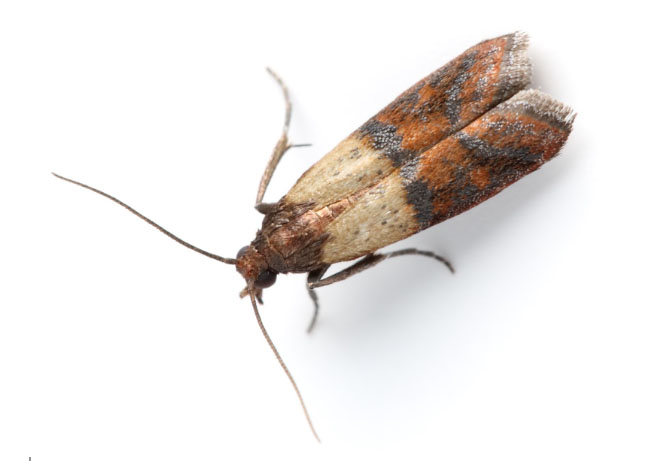Indian meal moth (Plodia interpunctella)

The Indian meal moth is one of the most common food pests in Finnish households. It is a small, nocturnal moth with brown forewings and light-colored hindwings. Adult moths often fly around the kitchen in the evenings, but the real damage is caused by larvae living in food products.
Identification
Small, nocturnal moth with light-colored forewings and brown hindwings. Adults are often seen flying in kitchens, while larvae spin silk webbing in dry food products. Common in grain products and nuts.
Habits
Indian meal moth larvae:
- infest flour, rice, cereals, nuts, dried fruits, and pet food
- spin sticky silk in contaminated items
- can spread widely throughout kitchen cabinets, cracks, and surfaces
- are most active in warmth, especially during summer or in heated spaces
Adult moths do not feed, but a female can lay up to 300 eggs – often directly inside packaging or on food surfaces.
Control
If Indian meal moths are seen in the kitchen or food items, professional pest control is recommended.
A pest control professional will:
- identify infested areas and use safe, targeted control methods
- provide guidance on inspecting and discarding contaminated food
- treat cabinets, cracks, and structural hiding places for larvae and eggs
- use pheromone traps and insecticides when needed in difficult cases
- advise on proper storage and prevention (sealing, cleaning, etc.)
DIY methods like basic cleaning or replacing food are often not enough, as hidden larvae can survive and cause re-infestation later.
Summary:
The Indian meal moth is a difficult-to-control food pest that spreads quickly throughout the kitchen. Professional treatment is the most effective way to eliminate the infestation permanently and prevent recurrence.
Pest control visits starting from €149

